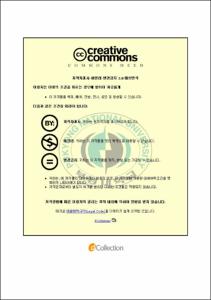다매체환경모델과 부분순서이론을 이용한 화학물질 위해성평가를 위한 관리우선순위 결정
- Alternative Title
- Ranking of chemical substances for risk assessment using a multi-media environmental model and partial order theory
- Abstract
- Pollution by chemical substances such as POPs (Persistent Organic Pollutants), EDCs (Endocrine Disrupting Chemicals) and PBTs (Persistent Bio-accumulative and Toxic substances) in the ecosystem has become more complex and varied, increasing the possibility of irreversible damage to human health or the ecosystem.
Even at this moment, such chemical substances are continuously developed, manufactured and circulated, and accordingly the type and quantity of chemical substances flowing into the ecosystem are also increasing.
There are 100,000 or more chemical substances circulated around the world, and about 38,000 chemical substances are used in Korea. It has been reported that 2,000 or more new substances are developed and commercialized around the world and about 300 new chemical substances are introduced to Korean market each year. Furthermore, the circulation and production of such chemical substances is also continuously increasing around the world, and the introduction of and the support for environment-friendly chemical substances management policy have become the major issue of the international society. Therefore it is necessary to have a management priority setting system for various chemical substances is required for efficient management.
This study developed MUSEM (MUlti-media Simplebox-systems Environmental Model), a multimedia environmental model that can simultaneously evaluate the possibility of exposure of hundreds of chemical substances in order to efficiently manage chemical substances that can have negative impact on human health or ecological environment through environmental contamination.
And in this study an alternative priority setting methods for the management of chemical substances in connection based on partial order theory (POT) and Hasse diagram. The theory of partial orders has been used to order chemical substances according to their negative effect on human health and the environment. POT is a simple technique that a priori includes "<" as the only mathematical relation. The theory of partial orders is characterized as being based on fewer assumptions concerning functional relationships and does not apply weighting factors.
MUSEM executed the modeling for Japan by setting all 47 prefectures of Japan as the regional area for 62 chemical substances and the rest of the territory of Japan, excluding regional area, as the continental area and made the estimation of concentration among environment media in each administrative area and made the sensitivity analysis on Tokyo area.
This study calculated daily intake rate of chemical substances by human using the PRTR data concerning 21 chemical substances subjected to Type II monitoring chemical substances centering on the area which produced the highest amount of each chemical substance among 47 administrative areas of Japan. The daily intake rate of chemical substances estimated based on the model was evaluated by dividing cases into the "case 1 where the degradation rate constant is 0" and the "case 2 where the degradation rate constant is not 0" and applying them to MUSEM.
In case 1, the degradation rate was set to 0, and both regional and continental areas showed similar values for the substances with high transitivity to the atmosphere such as isoprene. As compared with the daily intake of case 1 which did not consider degradation, the daily intake of case 2 which considered the degradation decreased by 0.01%∥50% (10% in average) in the regional area and more in the continental area by 0.01%∥16% (3% in average). This indicates that the degradation speed of chemical substances has greater impact on the estimation of the daily intake and that it is necessary to set values according to the actual conditions including the biological degradation and the degradation in water or air when evaluating the danger.
The study also calculated the concentration of exposure for 174 substances, the TRI data of which are available, in Busan, Korea, using the multimedia environmental model, MUSEM. The estimation was made for 8 different media (such as air, freshwater, seawater, natural soil, agricultural soil, urban/industrial soil, sediment in freshwater, and sediment in seawater), and the result of applying POT by simultaneously reflecting the distribution of the concentration of chemical substances in each of the said media showed the management priority for the chemical substances in Busan in the order of toluene, acetic acid, hydrogen chloride, azinphos-methyl, and acetaldehyde.
- Issued Date
- 2007
- Awarded Date
- 2007. 2
- Type
- Dissertation
- Publisher
- 부경대학교 대학원
- Alternative Author(s)
- Roh, Kyong-Joon
- Affiliation
- 부경대학교 대학원
- Department
- 대학원 환경공학과
- Advisor
- 박정우
- Table Of Contents
- Ⅰ. 서론 = 1
Ⅱ. 재료 및 방법 = 7
1. 다매체환경모델의 개발 = 7
1.1 다매체환경모델의 개요 = 7
1.2 환경매체중 화학물질의 물질수지 = 12
1.3 환경매체간 화학물질의 분배평형 = 15
1.4 환경매체중 화학물질의 분해 = 18
1.5 환경매체에 의한 노출평가 = 21
1.6 위해성평가 지침치 설정 = 26
1.7 위해성평가 = 27
1.8 다매체환경모델과 입력자료 데이터베이스의 연계 = 29
2. 순위결정을 위한 부분순서이론 = 33
2.1 부분순서이론 = 33
2.2 Hasse 다이아그램 = 36
2.3 선형확장과 순위확률 = 38
Ⅲ. MUSEM의 적용성 = 39
1. 실측치와 비교평가 및 민감도 분석 = 39
1.1 모델입력자료 산정 = 40
1.2 환경매체중 화학물질 분포 및 실측치와 비교평가 = 54
1.3 민감도 분석 = 59
2. 인간의 1일섭취량 = 64
2.1 모델입력자료 산정 = 64
2.2 인간의 1일 섭취량 산정 = 69
Ⅳ. 화학물질 위해성평가를 위한 관리우선순위 결정 = 76
1. 다매체환경모델에 의한 노출가능성 평가 = 76
1.1 모델입력자료 산정 = 77
1.2 환경매체중 화학물질 농도예측 = 84
2. 노출가능성과 부분순서이론에 의한 관리우선순위 결정 = 104
Ⅴ. 결론 = 113
참고문헌 = 115
- Degree
- Doctor
- Files in This Item:
-
-
Download
 다매체환경모델과 부분순서이론을 이용한 화학물질 위해성평가를 위한 관리우선순위 결정.pdf
기타 데이터 / 2.63 MB / Adobe PDF
다매체환경모델과 부분순서이론을 이용한 화학물질 위해성평가를 위한 관리우선순위 결정.pdf
기타 데이터 / 2.63 MB / Adobe PDF
-
Items in Repository are protected by copyright, with all rights reserved, unless otherwise indicated.